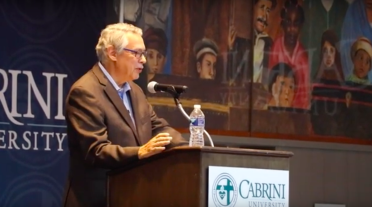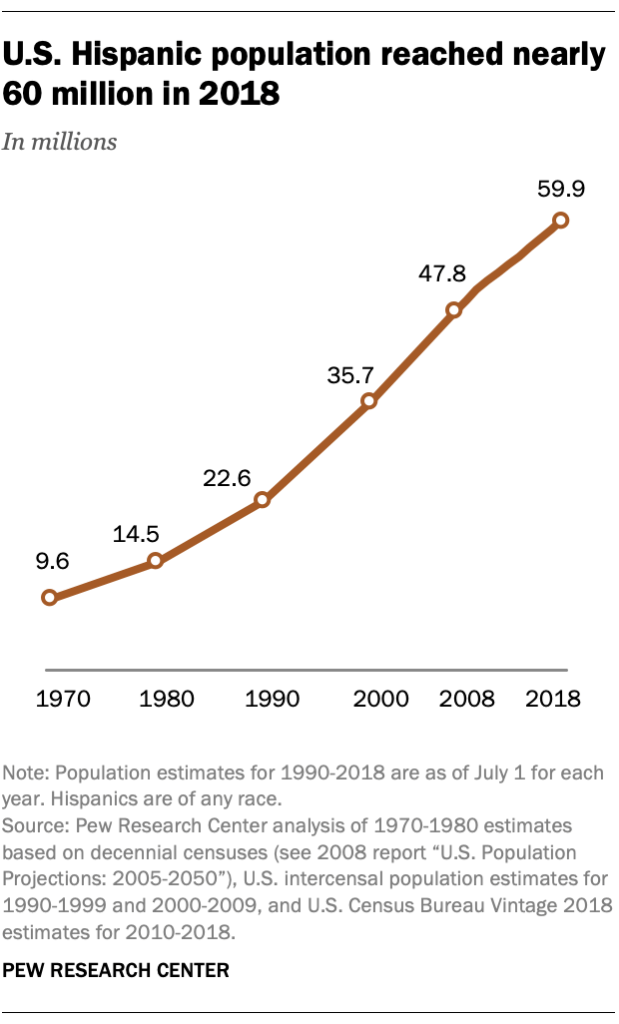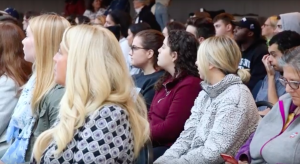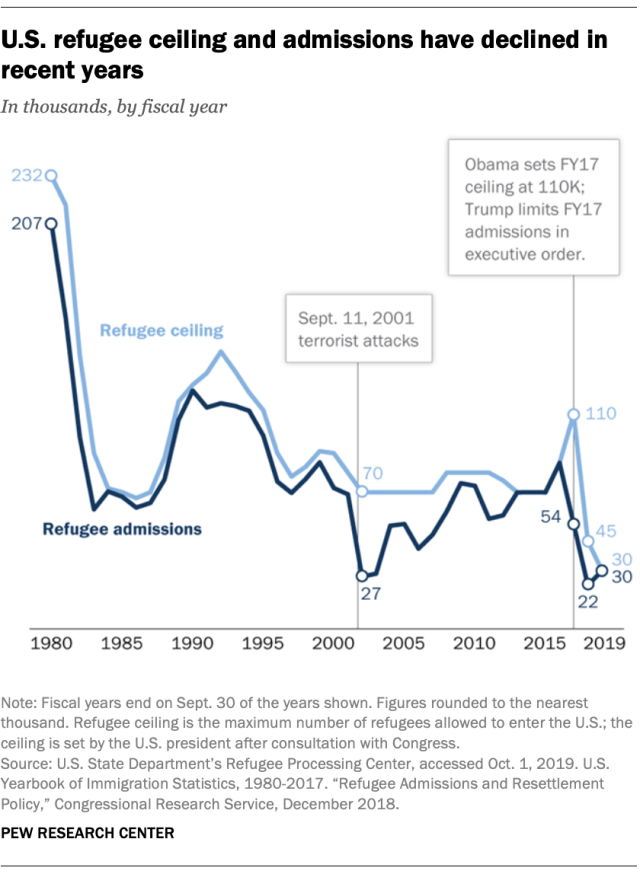College students should utilize their skills and talents to be advocates for social change, a nationally renowned journalist said, in regards to immigration reform.
“When you begin to act in concert with others, you can bring about astonishing changes,” Juan Gonzalez told a standing-room-only audience of students, faculty and staff at the “Decolonizing the Borderlands” Symposium in Grace Hall on Friday, Oct. 18.

Renowned for his work in 50 plus years in journalism focusing on public policy, migration and race relations, Gonzalez discussed the rise of Latino immigration in the United States and the tension at the US-Mexico border.
He noted that one of the major contributors to this border crisis is the current political climate that decimates the integrity of the Latino population in the United States.
“We face today an unprecedented demagogic assault on the country’s immigrant and Latino population…,” Gonzalez said. “The assault comes directly from the White House and a large section of the ruling party that controls and threatens the very basis of our democracy.”
Aside from the political situation, Gonzalez noted there is a “great wall of ignorance,” a “psychological barrier” that separates the US from Mexico. The wall was not built by traditional brick and mortar means, but rather built by fear and lack of proper education, which he says “shrouds people in darkness.”
Even in the education system, Americans learn about the great contributions of white people but fail to study the accomplishments of people of color. The only education Americans receive is through skewed media depictions that paint people of color as “threats to society rather than contributors.”
As the son of Puerto Rican immigrants, Juan Gonzalez said that this inquiry would lead him to pursue a career in journalism.
“I couldn’t understand why this by all the progress in civil rights and equal opportunity of the past 50 years the news media kept depicting ethnic minorities,” Gonzalez said. “in such a negative manner.”
After all, a substantial percentage of the United States population is comprised of Latinos. According to the Pew Research Center, in 1970 there were 9.6 million Latinos in the United Status. The US census noted that the population in 2017 has since skyrocketed to 58.9 million Latinos.
However, Gonzalez points out that the United States never counts Puerto Ricans in the census. If they did, the U.S Latino population would total at 64 million.

Likewise, the number of asylum seekers from Central American countries has dramatically increased within the last 10 years. According to the UN High Commissioner for Refugees, in 2011, there were 18,000 asylum seekers. In 2018, there 294,000 asylum seekers.
Gonzalez noted that the spike in numbers raises a red flag. These migrations “do not arise out of thin air…” He said.. “Rather they are vast manifestations of profound flaws in the economic and the political systems of our modern world.”
The key to understanding the root of the conflict lies within the United States affairs with Latin American countries. During the last 19th and early 20th centuries, the United States used numerous military interventions in Latin American countries to exploit their goods, such as oil, sugar and to support American business practices through altering the government and economic policies.
Although a complex situation, Gonzalez explained that continued US foreign aid and military interventions in the latter half of the 20th century laid the foundation for the cycle of violence in Latin American countries.
For example, Gonzalez dispelled the notion that Latino immigrants will bring the “dangerous” street gang culture to the United States. MS 13 and various Latino street gangs have no roots whatsoever in Latin American countries. The gangs arose in various US cities, such as Los Angles during the 1980s.

At this time, thousands of men, women and children fled to the United States from their belligerent homelands in El Salvador, Nicaragua and Guatemala. These countries were torn apart in a civil war, “fueled by US military aid and intervention on the side of right-wing government.”
As the children grew up, a “small, but significant percentage” would, unfortunately, choose a life of crime and join in the street gangs. The gang members often ended up in the prison system.
Gonzalez noted that upon release some 46,000 ex-convicts were deported back to their home countries in Central America between 1998 and 2005. Since they had been living in the US from the time they were young children, their home countries were rather foreign to them. Nevertheless, these criminals returned to their homelands set with the tools to establish an international presence of their gang. They got ahold of US guns, established new gang “chapters” and recruited local youth to join.
The homicide rate in Central American countries is astronomically higher than in the United States.
“Eight of the world’s 50th deadliest cities in 2016 were in Central America,” Gonzales said. “In the city of San Salvador, the homicide rate is 130 per 100,000. Remember, New York is 1.8 and Chicago is 18 [per 100,000]. ”
Gonazlez feels that the United States has played a role in the growth of violence in Central American countries.
“We have in essence incubated criminals, deported them to these countries,” Gonzalez said, “ supplied them with guns and now they are terrorizing the countries they were born in but never knew.”
This example is an anomaly. Most of the immigrants arrive in the United States in search of better lives for their families, some of which to flee the violence perpetuating their home countries.
He points out that Latino immigrants are the nuts and bolts that hold the United States together. This country wouldn’t be able to run without their contributions and work.
“Even today, the most menial and unappreciated work is done by Latino migrants,” Gonzalez said. Those picking fruits and vegetables that nourish us, who butcher the meat and the poultry to consume, who tend our lawns, repair our roofs… who build our houses and haul our waste, who clean the hotels we use and the office buildings where we work, who wash the dishes and clean the tables at the restaurants where we eat, [and] who keep our universities clean and sparkling.”
Despite the contribution from Latinos, entrance into the United States is becoming increasingly difficult. New policies from the administration have lower refugee admission numbers. For 2020, the current administration has set the refugee admission policy to 18,000 refugees. This number is not limited to Latino immigrants, but all refugees across the globe. Considering that in 2017 the refugee admittance number was 110,000, this new number is extremely low.

For those already living in the US obtaining a green card is likely dependent upon one’s income level. According to the New York Times, the current administration recently introduced new policies that favor wealthier immigrants who would not utilize housing programs, SNAP benefits, etc. These immigrants would be more likely to receive a green card than those who are low-income.
The administration also wants to implement a new points-based system in which immigrants receive points based on factors such as education level, job offer, ability to speak English, etc. Those with more points are more likely to gain admittance into the country.
“This will increasingly favor immigration from South and East Asia where about 52 percent of the people who come in have a college degree. It will be to the detriment of people in Mexico, Central America and The Caribbean where basically six to 10 percent of people coming in have college degrees. “
However, Gonzalez remained optimistic and encouraged students to take action in changing America’s future.
“It is up to you to redefine what it means to be an American in the United States in the 21st Century,” Gonzalez said. “But you must always do it with a firm grounding in the sacrifice and hard work of your parents and those who came before you.”


